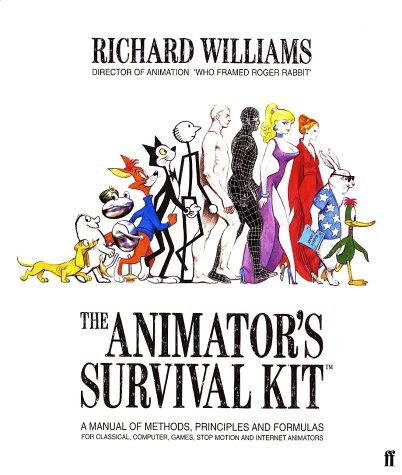
《The Princeton Companion to Mathematics》书籍《The Princeton Companion to Mathematics》
作者:《The Princeton Companion to Mathematics》书籍
出版社:Princeton University Press
出版年:2008-9-28
评分:9.5
ISBN:9780691118802
所属分类:教辅教材
书刊介绍
内容简介
This is a one-of-a-kind reference for anyone with a serious interest in mathematics. Edited by Timothy Gowers, a recipient of the Fields Medal, it presents nearly two hundred entries, written especially for this book by some of the world's leading mathematicians, that introduce basic mathematical tools and vocabulary; trace the development of modern mathematics; explain essential terms and concepts; examine core ideas in major areas of mathematics; describe the achievements of scores of famous mathematicians; explore the impact of mathematics on other disciplines such as biology, finance, and music--and much, much more.
Unparalleled in its depth of coverage, The Princeton Companion to Mathematics surveys the most active and exciting branches of pure mathematics, providing the context and broad perspective that are vital at a time of increasing specialization in the field. Packed with information and presented in an accessible style, this is an indispensable resource for undergraduate and graduate students in mathematics as well as for researchers and scholars seeking to understand areas outside their specialties.
* Features nearly 200 entries, organized thematically and written by an international team of distinguished contributors
* Presents major ideas and branches of pure mathematics in a clear, accessible style
* Defines and explains important mathematical concepts, methods, theorems, and open problems
* Introduces the language of mathematics and the goals of mathematical research
* Covers number theory, algebra, analysis, geometry, logic, probability, and more
* Traces the history and development of modern mathematics
* Profiles more than ninety-five mathematicians who influenced those working today
* Explores the influence of mathematics on other disciplines
* Includes bibliographies, cross-references, and a comprehensive index
作品目录
TABLE OF CONTENTS:
Preface ix
Contributors xvii
Part I Introduction
I.1 What Is Mathematics About? 1
I.2 The Language and Grammar of Mathematics 8
I.3 Some Fundamental Mathematical Definitions 16
I.4 The General Goals of Mathematical Research 48
Part II The Origins of Modern Mathematics
II.1 From Numbers to Number Systems 77
II.2 Geometry 83
II.3 The Development of Abstract Algebra 95
II.4 Algorithms 106
II.5 The Development of Rigor in Mathematical Analysis 117
II.6 The Development of the Idea of Proof 129
II.7 The Crisis in the Foundations of Mathematics 142
Part III Mathematical Concepts
III.1 The Axiom of Choice 157
III.2 The Axiom of Determinacy 159
III.3 Bayesian Analysis 159
III.4 Braid Groups 160
III.5 Buildings 161
III.6 Calabi-Yau Manifolds 163
III.7 Cardinals 165
III.8 Categories 165
III.9 Compactness and Compactification 167
III.10 Computational Complexity Classes 169
III.11 Countable and Uncountable Sets 170
III.12 C*-Algebras 172
III.13 Curvature 172
III.14 Designs 172
III.15 Determinants 174
III.16 Differential Forms and Integration 175
III.17 Dimension 180
III.18 Distributions 184
III.19 Duality 187
III.20 Dynamical Systems and Chaos 190
III.21 Elliptic Curves 190
III.22 The Euclidean Algorithm and Continued Fractions 191
III.23 The Euler and Navier-Stokes Equations 193
III.24 Expanders 196
III.25 The Exponential and Logarithmic Functions 199
III.26 The Fast Fourier Transform 202
III.27 The Fourier Transform 204
III.28 Fuchsian Groups 208
III.29 Function Spaces 210
III.30 Galois Groups 213
III.31 The Gamma Function 213
III.32 Generating Functions 214
III.33 Genus 215
III.34 Graphs 215
III.35 Hamiltonians 215
III.36 The Heat Equation 216
III.37 Hilbert Spaces 219
III.38 Homology and Cohomology 221
III.39 Homotopy Groups 221
III.40 The Ideal Class Group 221
III.41 Irrational and Transcendental Numbers 222
III.42 The Ising Model 223
III.43 Jordan Normal Form 223
III.44 Knot Polynomials 225
III.45 K-Theory 227
III.46 The Leech Lattice 227
III.47 L-Functions 228
III.48 Lie Theory 229
III.49 Linear and Nonlinear Waves and Solitons 234
III.50 Linear Operators and Their Properties 239
III.51 Local and Global in Number Theory 241
III.52 The Mandelbrot Set 244
III.53 Manifolds 244
III.54 Matroids 244
III.55 Measures 246
III.56 Metric Spaces 247
III.57 Models of Set Theory 248
III.58 Modular Arithmetic 249
III.59 Modular Forms 250
III.60 Moduli Spaces 252
III.61 The Monster Group 252
III.62 Normed Spaces and Banach Spaces 252
III.63 Number Fields 254
III.64 Optimization and Lagrange Multipliers 255
III.65 Orbifolds 257
III.66 Ordinals 258
III.67 The Peano Axioms 258
III.68 Permutation Groups 259
III.69 Phase Transitions 261
III.70 p 261
III.71 Probability Distributions 263
III.72 Projective Space 267
III.73 Quadratic Forms 267
III.74 Quantum Computation 269
III.75 Quantum Groups 272
III.76 Quaternions, Octonions, and Normed Division Algebras 275
III.77 Representations 279
III.78 Ricci Flow 279
III.79 Riemann Surfaces 282
III.80 The Riemann Zeta Function 283
III.81 Rings, Ideals, and Modules 284
III.82 Schemes 285
III.83 The Schrödinger Equation 285
III.84 The Simplex Algorithm 288
III.85 Special Functions 290
III.86 The Spectrum 294
III.87 Spherical Harmonics 295
III.88 Symplectic Manifolds 297
III.89 Tensor Products 301
III.90 Topological Spaces 301
III.91 Transforms 303
III.92 Trigonometric Functions 307
III.93 Universal Covers 309
III.94 Variational Methods 310
III.95 Varieties 313
III.96 Vector Bundles 313
III.97 Von Neumann Algebras 313
III.98 Wavelets 313
III.99 The Zermelo-Fraenkel Axioms 314
Part IV Branches of Mathematics
IV.1 Algebraic Numbers 315
IV.2 Analytic Number Theory 332
IV.3 Computational Number Theory 348
IV.4 Algebraic Geometry 363
IV.5 Arithmetic Geometry 372
IV.6 Algebraic Topology 383
IV.7 Differential Topology 396
IV.8 Moduli Spaces 408
IV.9 Representation Theory 419
IV.10 Geometric and Combinatorial Group Theory 431
IV.11 Harmonic Analysis 448
IV.12 Partial Differential Equations 455
IV.13 General Relativity and the Einstein Equations 483
IV.14 Dynamics 493
IV.15 Operator Algebras 510
IV.16 Mirror Symmetry 523
IV.17 Vertex Operator Algebras 539
IV.18 Enumerative and Algebraic Combinatorics 550
IV.19 Extremal and Probabilistic Combinatorics 562
IV.20 Computational Complexity 575
IV.21 Numerical Analysis 604
IV.22 Set Theory 615
IV.23 Logic and Model Theory 635
IV.24 Stochastic Processes 647
IV.25 Probabilistic Models of Critical Phenomena 657
IV.26 High-Dimensional Geometry and Its Probabilistic Analogues 670
Part V Theorems and Problems
V.1 The ABC Conjecture 681
V.2 The Atiyah-Singer Index Theorem 681
V.3 The Banach-Tarski Paradox 684
V.4 The Birch-Swinnerton-Dyer Conjecture 685
V.5 Carleson's Theorem 686
V.6 The Central Limit Theorem 687
V.7 The Classification of Finite Simple Groups 687
V.8 Dirichlet's Theorem 689
V.9 Ergodic Theorems 689
V.10 Fermat's Last Theorem 691
V.11 Fixed Point Theorems 693
V.12 The Four-Color Theorem 696
V.13 The Fundamental Theorem of Algebra 698
V.14 The Fundamental Theorem of Arithmetic 699
V.15 Gödel's Theorem 700
V.16 Gromov's Polynomial-Growth Theorem 702
V.17 Hilbert's Nullstellensatz 703
V.18 The Independence of the Continuum Hypothesis 703
V.19 Inequalities 703
V.20 The Insolubility of the Halting Problem 706
V.21 The Insolubility of the Quintic 708
V.22 Liouville's Theorem and Roth's Theorem 710
V.23 Mostow's Strong Rigidity Theorem 711
V.24 The P versus NP Problem 713
V.25 The Poincaré Conjecture 714
V.26 The Prime Number Theorem and the Riemann Hypothesis 714
V.27 Problems and Results in Additive Number Theory 715
V.28 From Quadratic Reciprocity to Class Field Theory 718
V.29 Rational Points on Curves and the Mordell Conjecture 720
V.30 The Resolution of Singularities 722
V.31 The Riemann-Roch Theorem 723
V.32 The Robertson-Seymour Theorem 725
V.33 The Three-Body Problem 726
V.34 The Uniformization Theorem 728
V.35 The Weil Conjectures 729
Part VI Mathematicians
VI.1 Pythagoras (ca. 569 B.C.E.-ca. 494 B.C.E.) 733
VI.2 Euclid (ca. 325 B.C.E.-ca. 265 B.C.E.) 734
VI.3 Archimedes (ca. 287 B.C.E.-212 B.C.E.) 734
VI.4 Apollonius (ca. 262 B.C.E.-ca. 190 B.C.E.) 735
VI.5 Abu Ja'far Muhammad ibn Musa al-Khwarizmi (800-847) 736
VI.6 Leonardo of Pisa (known as Fibonacci) (ca. 1170-ca. 1250) 737
VI.7 Girolamo Cardano (1501-1576) 737
VI.8 Rafael Bombelli (1526-after 1572) 737
VI.9 François Viète (1540-1603) 737
VI.10 Simon Stevin (1548-1620) 738
VI.11 René Descartes (1596-1650) 739
VI.12 Pierre Fermat (160?-1665) 740
VI.13 Blaise Pascal (1623-1662) 741
VI.14 Isaac Newton (1642-1727) 742
VI.15 Gottfried Wilhelm Leibniz (1646-1716) 743
VI.16 Brook Taylor (1685-1731) 745
VI.17 Christian Goldbach (1690-1764) 745
VI.18 The Bernoullis (fl. 18th century) 745
VI.19 Leonhard Euler (1707-1783) 747
VI.20 Jean Le Rond d'Alembert (1717-1783) 749
VI.21 Edward Waring (ca. 1735-1798) 750
VI.22 Joseph Louis Lagrange (1736-1813) 751
VI.23 Pierre-Simon Laplace (1749-1827) 752
VI.24 Adrien-Marie Legendre (1752-1833) 754
VI.25 Jean-Baptiste Joseph Fourier (1768-1830) 755
VI.26 Carl Friedrich Gauss (1777-1855) 755
VI.27 Siméon-Denis Poisson (1781-1840) 757
VI.28 Bernard Bolzano (1781-1848) 757
VI.29 Augustin-Louis Cauchy (1789-1857) 758
VI.30 August Ferdinand Möbius (1790-1868) 759
VI.31 Nicolai Ivanovich Lobachevskii (1792-1856) 759
VI.32 George Green (1793-1841) 760
VI.33 Niels Henrik Abel (1802-1829) 760
VI.34 János Bolyai (1802-1860) 762
VI.35 Carl Gustav Jacob Jacobi (1804-1851) 762
VI.36 Peter Gustav Lejeune Dirichlet (1805-1859) 764
VI.37 William Rowan Hamilton (1805-1865) 765
VI.38 Augustus De Morgan (1806-1871) 765
VI.39 Joseph Liouville (1809-1882) 766
VI.40 Eduard Kummer (1810-1893) 767
VI.41 Évariste Galois (1811-1832) 767
VI.42 James Joseph Sylvester (1814-1897) 768
VI.43 George Boole (1815-1864) 769
VI.44 Karl Weierstrass (1815-1897) 770
VI.45 Pafnuty Chebyshev (1821-1894) 771
VI.46 Arthur Cayley (1821-1895) 772
VI.47 Charles Hermite (1822-1901) 773
VI.48 Leopold Kronecker (1823-1891) 773
VI.49 Georg Friedrich Bernhard Riemann (1826-1866) 774
VI.50 Julius Wilhelm Richard Dedekind (1831-1916) 776
VI.51 Émile Léonard Mathieu (1835-1890) 776
VI.52 Camille Jordan (1838-1922) 777
VI.53 Sophus Lie (1842-1899) 777
VI.54 Georg Cantor (1845-1918) 778
VI.55 William Kingdon Clifford (1845-1879) 780
VI.56 Gottlob Frege (1848-1925) 780
VI.57 Christian Felix Klein (1849-1925) 782
VI.58 Ferdinand Georg Frobenius (1849-1917) 783
VI.59 Sofya (Sonya) Kovalevskaya (1850-1891) 784
VI.60 William Burnside (1852-1927) 785
VI.61 Jules Henri Poincaré (1854-1912) 785 [Illustration credit: Portrait courtesy of Henri Poincaré Archives (CNRS,UMR 7117, Nancy)]
VI.62 Giuseppe Peano (1858-1932) 787
VI.63 David Hilbert (1862-1943) 788
VI.64 Hermann Minkowski (1864-1909) 789
VI.65 Jacques Hadamard (1865-1963) 790
VI.66 Ivar Fredholm (1866-1927) 791
VI.67 Charles-Jean de la Vallée Poussin (1866-1962) 792
VI.68 Felix Hausdorff (1868-1942) 792
VI.69 Élie Joseph Cartan (1869-1951) 794
VI.70 Emile Borel (1871-1956) 795
VI.71 Bertrand Arthur William Russell (1872-1970) 795
VI.72 Henri Lebesgue (1875-1941) 796
VI.73 Godfrey Harold Hardy (1877-1947) 797
VI.74 Frigyes (Frédéric) Riesz (1880-1956) 798
VI.75 Luitzen Egbertus Jan Brouwer (1881-1966) 799
VI.76 Emmy Noether (1882-1935) 800
VI.77 Wac?aw Sierpinski (1882-1969) 801
VI.78 George Birkhoff (1884-1944) 802
VI.79 John Edensor Littlewood (1885-1977) 803
VI.80 Hermann Weyl (1885-1955) 805
VI.81 Thoralf Skolem (1887-1963) 806
VI.82 Srinivasa Ramanujan (1887-1920) 807
VI.83 Richard Courant (1888-1972) 808
VI.84 Stefan Banach (1892-1945) 809
VI.85 Norbert Wiener (1894-1964) 811
VI.86 Emil Artin (1898-1962) 812
VI.87 Alfred Tarski (1901-1983) 813
VI.88 Andrei Nikolaevich Kolmogorov (1903-1987) 814
VI.89 Alonzo Church (1903-1995) 816
VI.90 William Vallance Douglas Hodge (1903-1975) 816
VI.91 John von Neumann (1903-1957) 817
VI.92 Kurt Gödel (1906-1978) 819
VI.93 André Weil (1906-1998) 819
VI.94 Alan Turing (1912-1954) 821
VI.95 Abraham Robinson (1918-1974) 822
VI.96 Nicolas Bourbaki (1935-) 823
Part VII The Influence of Mathematics
VII.1 Mathematics and Chemistry 827
VII.2 Mathematical Biology 837
VII.3 Wavelets and Applications 848
VII.4 The Mathematics of Traffic in Networks 862
VII.5 The Mathematics of Algorithm Design 871
VII.6 Reliable Transmission of Information 878
VII.7 Mathematics and Cryptography 887
VII.8 Mathematics and Economic Reasoning 895
VII.9 The Mathematics of Money 910
VII.10 Mathematical Statistics 916
VII.11 Mathematics and Medical Statistics 921
VII.12 Analysis, Mathematical and Philosophical 928
VII.13 Mathematics and Music 935
VII.14 Mathematics and Art 944
Part VIII Final Perspectives
VIII.1 The Art of Problem Solving 955
VIII.2 "Why Mathematics?" You Might Ask 966
VIII.3 The Ubiquity of Mathematics 977
VIII.4 Numeracy 983
VIII.5 Mathematics: An Experimental Science 991
VIII.6 Advice to a Young Mathematician 1000
VIII.7 A Chronology of Mathematical Events 1010
Index 1015
相关推荐
-

易学易做面食120种(第2版)
《易学易做面食120种(第2版)》内容简介:《易学易做面食120种》精心挑选了120种家常面食,总会有合乎您口味的一款,这些面食都是
-

英汉对照-女性的智慧
英汉对照-女性的智慧 本书特色 《女性的智慧(英汉对照)》笔触犀利,用词辛辣,针砭时弊酣畅淋漓,可谓女权宣言式的杰作。英汉对照-女性的智慧 目录 **部分 为女...
-

汉英科技翻译指要
汉英科技翻译指要 本书特色 《汉英科技翻译指要》的主要特色之一在于理论与实践较为完美的统一。当前,有些翻译论著侈谈理论,分析实列少,实用性差;有的就事论事,理论...
-

统计基础知识习题与实训-(第4版)
统计基础知识习题与实训-(第4版) 本书特色《统计基础知识习题与实训(第4版)》是根据中等职业教育国家规划教材《统计基础知识(第4版)》的内容编写的。该书的上篇...
-

鲁滨逊漂流记
鲁滨逊漂流记 本书特色 世界名著是人类文明中璀璨的明珠,在千百年间的时光流逝中却历久弥新。dk彩绘名著科普阅读系列正是精选全世界对儿童*具影响力的文学名著,配以...
-

社会研究方法教程
社会研究方法教程 内容简介 本书对社会研究的方法和理论作了系统全面的介绍。全书围绕社会研究的原理、逻辑策略和科学程序,从方法论、研究方式和具体研究方法及技术三个...
-

第9届全国新概念作文大赛获奖作品选
第9届全国新概念作文大赛获奖作品选 内容简介 由《萌芽》杂志社与北京大学、清华大学、复旦大学等十三所名牌大学参与主办的“新概念作文大赛”具有毋庸置疑的权威性.被...
-

心灵的风景:画笔带我走出抑郁
《心灵的风景:画笔带我走出抑郁》内容简介:这是一本讲述经由绘画走出抑郁的励志之书。李子玉是国际知名学者李欧梵的夫人,十数年
-

劫机!((牛津英汉双语读物))
劫机! 本书特色 “书虫”是牛津大学出版社奉献给世界英语学习者的一大精品。书虫在英语中大约是颇可爱的形象,试想想如痴如醉沉迷于书卷,孜孜不倦咀嚼着字母的那一只书...
-

商业伦理:概念与案例(第7版)(工商管理经典译丛)
商业伦理:概念与案例(第7版)(工商管理经典译丛) 本书特色 《商业伦理(概念与案例第7版)》(作者曼纽尔·g·贝拉斯克斯)是国外使用非常广泛的一本商...
-

宋词三百首-书声琅琅国学诵读本三
宋词三百首-书声琅琅国学诵读本三 本书特色 《书声琅琅国学诵读本:宋词三百首》重点引导孩子诵背原文;合理地编选一些故事,再配上具有连环画风格的插图,让孩子能更好...
-

(2012下)大学英语4级考试全真试卷(王长喜)
(2012下)大学英语4级考试全真试卷(王长喜) 本书特色 清晰解析作文:审题思路行文流畅 好词好句点评到位快速阅读:语篇分析层次明了 线索定位快速答题 ...
-

我的人生本可以
《我的人生本可以》内容简介:本书引导读者认识到自我内心力量的重要意义和强大潜力,帮助读者学习如何积极表达自我、树立自信、正
-

数学模型(第五版)
作品目录第1章 建立数学模型1.1 从现实对象到数学模型1.2 数学建模的重要意义1.3 建模示例之一包饺子中的数学1.4 建模示例之二路
-

国学传世经典--东周列国志
国学传世经典--东周列国志 本书特色 《东周列国志》是明代的一部长篇白话历史演义小说。是古今中外时间跨越*长,人物*多的一部小说,它描写了从西周宣王时期直到秦始...
-

英汉汉英人口学词汇手册
英汉汉英人口学词汇手册 本书特色 《外教社英汉·汉英人口学词汇手册》:收录人口学基本词汇英汉、汉英双向收词10000余条为人口学专业英语入门工具书英汉汉英人口学...
-

声声入心:流行钢琴简易弹唱教程
《声声入心:流行钢琴简易弹唱教程》内容简介:本书是为零基础钢琴弹唱爱好者学习流行歌曲弹唱而打造的基础教程。通过本书的学习,
-

机械制图-(第三版)
机械制图-(第三版) 本书特色 《机械制图(第3版)》作为立体化教材包的主教材,与之相配套的还有助学、助教课件,学习指导等相关教材。机械制图-(第三版) 目录 ...
-

大学英语四级阅读真经
大学英语四级阅读真经 本书特色 《大学英语四级阅读真经》全面介绍了四级阅读的复习方法、应试技巧和注意事项。本书的第1卷对四级的阅读“真经”做了概括说明。 第2、...
-

楷书-给初中生练字的28条建议
楷书-给初中生练字的28条建议 本书特色 著名书法教育家田英章老师担纲书写。《给初中生练字的28条建议:楷书》立足考试,立足教学,立足知识积累,立足学生写字,卷...





